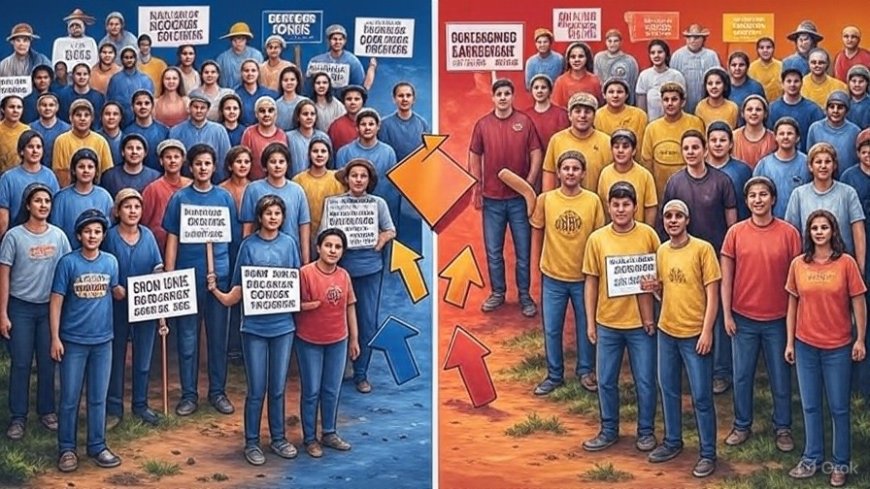California vs. Texas Redistricting Showdown: How Grassroots Activists Are Shaping the 2026 Midterms
California and Texas activists are fighting back against redistricting maps ahead of the 2026 midterms. Exclusive insights with GIS mapping, grassroots voices, and legal analysis.

A New Battleground for Democracy
As the 2026 U.S. midterm elections draw closer, two of the nation’s most influential states—California and Texas—are at the epicenter of a redistricting showdown that could reshape the political landscape for the next decade.
On Friday, August 22, 2025, federal judges in both states issued rulings allowing contested maps to proceed temporarily while appeals continue. At the heart of the fight are not only partisan lawmakers but also grassroots activists who have transformed redistricting from a backroom political exercise into a citizen-driven movement.
California’s Push for Fair Representation
California, traditionally leaning blue, is facing scrutiny over accusations that its independent redistricting commission still favors incumbents. Non-partisan watchdogs like the League of Women Voters of California have raised concerns that minority-heavy districts in Los Angeles and the Central Valley were subtly reshaped, diluting Latino and Asian-American voting power.
Local activist groups, such as Fresno Voters for Equity, have been organizing community mapping sessions in libraries and universities. These gatherings use GIS mapping tools to teach residents how district lines affect school funding, healthcare access, and housing projects.
“This isn’t just about political power—it’s about whether families in immigrant neighborhoods get a fair share of resources,” said Maria Gonzalez, a grassroots organizer in East Los Angeles.
Texas: A Different Kind of Fight
In Texas, the stakes are equally high, though the dynamics differ. With rapid population growth in suburban areas around Dallas, Houston, and Austin, the state’s Republican-led legislature has drawn maps that critics say dilute the influence of younger, more diverse voters.
Grassroots coalitions such as Fair Maps Texas and Austin Youth Action have taken the fight to the streets—literally. Volunteers have been distributing flyers at community centers and launching bilingual social media campaigns urging residents to understand how redistricting can decide whether their voices count.
Legal experts warn that Texas’s maps could become a blueprint for other GOP-led states, cementing partisan advantages despite shifting demographics.
Data-Driven Democracy: How GIS Maps Are Changing the Fight
For the first time in modern redistricting battles, local activists are using open-source GIS mapping tools that rival those of political operatives. Platforms like Dave’s Redistricting App allow anyone with a laptop to design and analyze district maps.
Activist groups are layering demographic data, census records, and even public school enrollment trends to demonstrate how official maps undermine fair representation. In California, one student-led initiative at UCLA has produced interactive maps showing how proposed district lines could split historically Black neighborhoods in South Los Angeles.
“Data has become our weapon,” explained Jamal Robinson, a student researcher. “We can now prove what communities have always felt—that they’re being carved up to weaken their influence.”
Grassroots Power vs. Political Machines
The activism is producing results. In San Francisco, a coalition of community leaders successfully pressured commissioners to redraw one district line that had cut through Chinatown. In Texas, lawsuits filed by grassroots-backed legal teams are forcing state officials to defend their maps in federal court.
Yet, the fight is far from over. Analysts at the Brennan Center for Justice note that while grassroots pressure can bring visibility, ultimate power lies with courts that often split along ideological lines.
Looking Ahead to 2026
The 2026 midterms could mark the first true test of whether grassroots activism can shift the balance of political power in redistricting. California and Texas, representing polar ends of America’s political spectrum, now serve as case studies in how everyday citizens are demanding transparency.
For policymakers, the battle underscores a deeper truth: redistricting is no longer just a partisan chess match; it has become a civic movement with the potential to reshape how democracy functions in America.
Conclusion
Whether voters in Los Angeles or Dallas will ultimately feel the impact of their activism depends on the courts—and on whether grassroots momentum can sustain itself through election day in November 2026. One thing is clear: the redistricting battle is no longer hidden in legislative chambers. It has spilled into community halls, college campuses, and neighborhood streets, redefining who gets to decide America’s political future.











